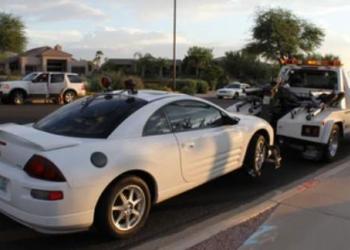
Impoundment and Inventory Searches of an Arrestee’s Vehicle
The constitutionality of an impoundment and inventory search of an arrestee’s motor vehicle depends upon the applicability the Community Caretaking Doctrine. Generally, the Community Caretaking rule applies in those situations when the driver has been arrested and his vehicle is parked illegally, poses a safety hazard, or is vulnerable to vandalism or theft. This includes when the vehicle is in a third party’s driveway. An inventory search of an impounded vehicle is lawful so long as not used as a subterfuge for a criminal investigation and his/her unfettered discretion is limited by a law enforcement agency’s searching procedures.
San Bernardino County Sheriff’s Deputy Daniel Peterson attempted to stop defendant Jonathan Anderson at about 2:00 a.m. one morning, for a partially obscured license plate in violation of Veh. Code § 5201. Defendant initially failed to stop, turning abruptly into a dead-end street instead and accelerating to the end of the road. As the deputy called for backup, defendant turned into an apartment complex, and then into the driveway of a private residence where (having run out of places to go) he stopped and got out of his truck. The total elapsed time between when Deputy Peterson first lit up his emergency lights to when defendant finally stopped was about 30 to 45 seconds. Believing that defendant had attempted to flee—an assumption that defendant denied—Deputy Peterson took him into custody at gun point and, upon arrival of a second deputy, handcuffed him. Defendant claimed he didn’t see the deputy’s emergency lights. He also claimed to be parked in the driveway of a friend. Defendant did admit, however, that his license was expired; a fact verified via radio. It was also learned that defendant was a “career criminal” (whatever that means). Upon contacting the resident who told the deputies he did not know defendant, and that he wanted defendant’s vehicle removed from his driveway, the deputies decided to impound defendant’s truck pursuant to Veh. Code § 14607.6 (dealing with the impoundment of the vehicle of an unlicensed driver). In preparation to towing the vehicle, an inventory search was initiated (over defendant’s express objection), resulting in the recovery a loaded handgun from under the driver’s seat. Defendant was therefore arrested for being a felon in possession of a firearm. As Deputy Peterson took defendant to jail, Deputy Kyle Shuler filled out the necessary paperwork related to the impoundment pursuant to the standard administrative procedure requirements as described in the San Bernardino County Sherriff’s Department Manual. This included inventorying the contents of the vehicle. In so doing, Deputy Shuler checked off boxes reflecting the presence of two radios and a firearm in the car. The deputy failed, however, to document other property found in the car although pictures were taken of everything. Defendant was charged in federal court with one count of being a felon in possession of a firearm, per 18 U.S.C. § 922(g)(1). After his motion to suppress the gun was denied (defendant arguing primarily that the deputies initiated the search of his truck before verifying with the homeowner that he did not know defendant; a witness credibility issue decided by the trial court in the deputies’ favor), defendant pled guilty and was sentenced to six years and 5 months in prison. Defendant appealed.





